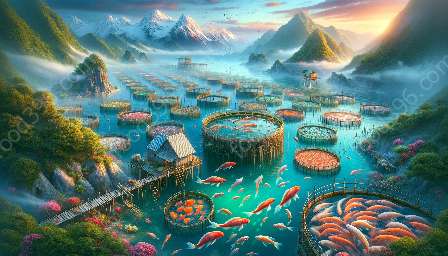The practice of cod aquaculture offers viable solutions to the increasing demand for seafood while promoting environmental sustainability and addressing challenges in seafood science. As an integral part of aquaculture of seafood species, cod aquaculture plays a crucial role in meeting global demands for seafood. This article explores the process, benefits, and challenges associated with cod aquaculture, shedding light on its significance in the realm of seafood production and science.
The Process of Cod Aquaculture
Cod aquaculture involves the controlled cultivation and breeding of cod in managed aquatic environments such as fish farms, recirculating aquaculture systems (RAS), and sea pens. The process begins with the careful selection of broodstock to ensure genetic diversity and desirable traits in the offspring. Eggs are then fertilized and incubated in controlled hatcheries, where environmental conditions such as temperature and oxygen levels are closely monitored to facilitate optimal development.
Once the juvenile cod, known as fingerlings, reach a suitable size, they are transferred to nursery facilities or grow-out tanks where they are fed a nutritionally balanced diet to support healthy growth. Throughout the cultivation process, water quality, disease management, and environmental impact are carefully managed to promote the well-being of the fish and minimize ecological disturbances.
Benefits of Cod Aquaculture
Cod aquaculture offers several distinct advantages that contribute to the sustainable production of seafood. By reducing pressure on wild cod populations, aquaculture helps conserve natural ecosystems and supports the recovery of wild fish stocks. Furthermore, the controlled environment of aquaculture facilities enables producers to optimize feed utilization, minimize waste, and reduce the ecological footprint of seafood production.
From a nutritional standpoint, cod cultivated through aquaculture can be monitored for quality and safety, ensuring that consumers have access to a consistent and reliable source of high-quality seafood. Additionally, aquaculture provides economic opportunities for coastal communities and contributes to food security by supplying seafood to meet the growing global demand.
Challenges in Cod Aquaculture
While cod aquaculture offers numerous benefits, it also presents unique challenges that require careful consideration and innovative solutions. One of the primary challenges is the development of sustainable feed formulations that promote efficient growth while reducing reliance on wild fish for feed ingredients. Additionally, disease management and maintaining optimal water quality are critical aspects of cod aquaculture that demand ongoing research and investment.
Environmental impact is another concern, as the discharge of nutrients and waste from aquaculture facilities can affect surrounding ecosystems if not properly managed. Addressing these challenges requires collaboration between industry stakeholders, researchers, and regulatory bodies to implement best practices and advancements in technology that enhance the sustainability of cod aquaculture.
The Intersection of Cod Aquaculture, Seafood Science, and Sustainability
Cod aquaculture serves as a focal point at the intersection of seafood science and sustainability, offering opportunities for research and innovation to enhance the efficiency and ecological responsibility of seafood production. Through scientific advancements in feed technology, genetics, and aquaculture management, researchers strive to improve the sustainability and productivity of cod aquaculture.
Furthermore, the study of cod aquaculture provides valuable insights into the ecological impact of aquaculture operations, enabling researchers to develop strategies for mitigating potential environmental effects while maximizing the benefits of seafood production. This multidisciplinary approach underscores the importance of integrating scientific knowledge with sustainable practices to ensure the long-term viability of cod aquaculture as a key component of seafood production.
Conclusion
Cod aquaculture represents a sustainable and innovative approach to meeting the global demand for seafood while addressing challenges in seafood science. By embracing responsible aquaculture practices, producers can contribute to the conservation of natural ecosystems, support food security, and provide consumers with high-quality seafood products. As the industry continues to evolve, ongoing research and collaborative efforts are essential to enhancing the sustainability and efficiency of cod aquaculture, ultimately contributing to a more sustainable seafood supply and a healthier marine environment.

